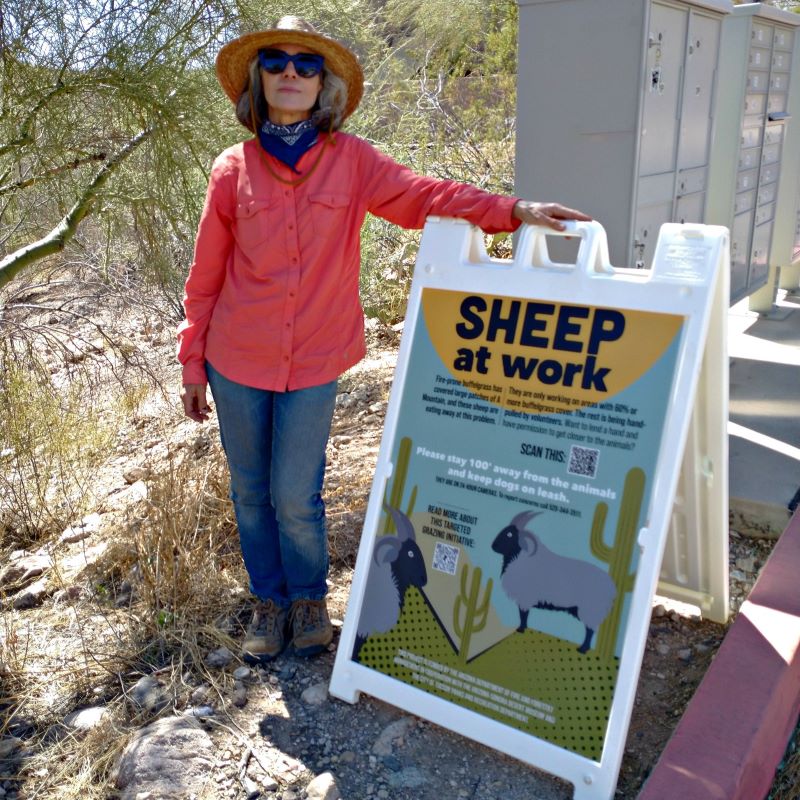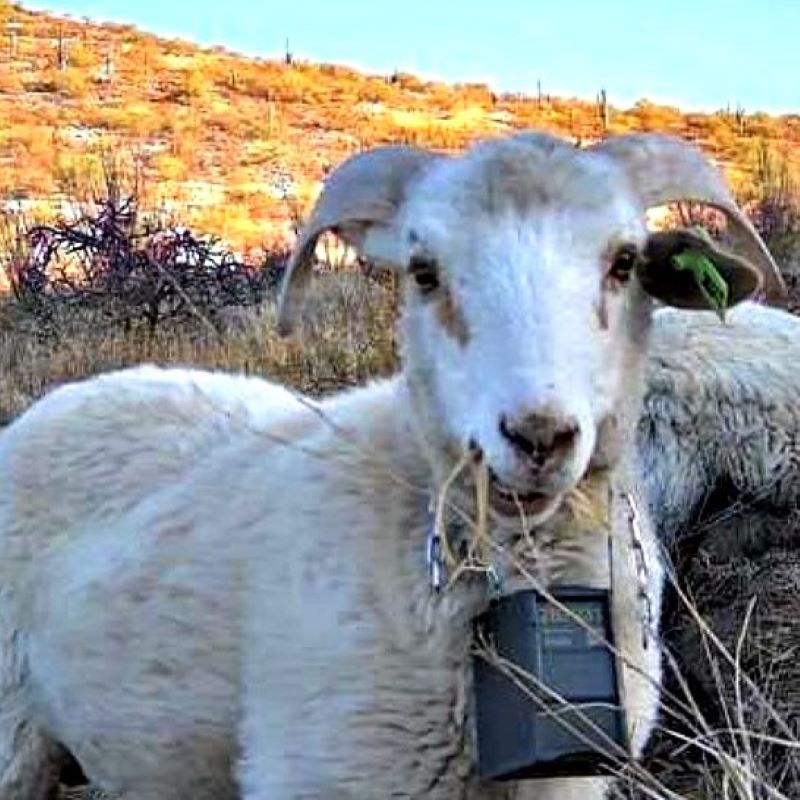Story by Rebecca West
Some years ago, Tucson Electric Power (TEP) made the decision to forego gas and battery-operated landscaping tools for use at its Solar Arrays. Instead, they decided to give the more eco-friendly method of “lambscaping” a shot. Provided for them by sixth-generation rancher Rusty Cocke, it’s the practice of employing flocks of sheep to keep plant growth in check.
The woolly cud chewers are well-suited to the task and quite efficient when it comes to tackling a variety of plant life. Without their grazing, the vegetation—some of which grows up to seven feet in height—can block the sun’s rays from feeding the energy-absorbing panels and inhibit solar power production.
Rather than noisy mowers and weed whackers capable of throwing damaging rocks, sheep quietly and without fuss consume the nonstop growth that creeps up and around the panels, providing a safe and cost-effective way to maintain the site while preserving the panels and the surrounding environment.
Hardly a new concept, using sheep for sustainable land management has seen an uptick in recent years while earning praise from ecologists. It’s a brilliant idea. The process of grazing, combined with sheep droppings, can help create a more resilient ecosystem. The custodians of Italy’s Pompeii Archaeological Park brought sheep back to the area in December of 2022 as a less intrusive solution to managing growth within the fragile setting, with quite pleasing results.
Closer to home and less well known is an environmental pilot project using Navajo-Churro sheep to help reduce the threat of wildfires on A Mountain at Sentinel Peak Park. This past spring, the Arizona-Sonora Desert Museum, in conjunction with the City of Tucson and the University of Arizona Cooperative Extension, deployed sheep there to help combat an invasive plant species known as buffelgrass, which is highly flammable when dry.
Nonindigenous to the Sonoran Desert, buffelgrass was introduced to the area in the 1930s by the U.S. Soil Conservation Service for cattle to nosh on and as an aid for erosion control. The latter was especially popular in Tucson in the 1970s and ‘80s. Native to Africa, Asia, and the Middle East, the plant’s drought tolerance led to its rapid expansion, transforming the desert landscape in the process. It can crowd out native plants, such as our towering saguaros.
As to the sheep in the program, Navajo-Churros are a variety of domestic ruminants descended from an ancient Iberian breed. Known as Spanish Churra, they were obtained by the Diné in the 1500s from Spaniards who arrived in North America with a view towards colonization. Cultivated for their wool and meat, the multi-horned sheep would eventually become an economic asset for the Navajo. The wool consists of a coarse protective topcoat and a soft, fluffy undercoat.
Bred and raised in Cochise County, the 15 sheep employed at Sentinel Peak Park are arid-adapted, rendering them extremely hardy with lower water requirements—much like the buffelgrass they were brought in to munch on. Trained to work with virtual fencing, the technology assured they stayed well within the targeted area.
Grazing specialist Grant Tims explained that they’re kept in a tight formation, walking in a systematic pattern. That way, they miss very little. Tims, who is also the owner of the flock, was contracted by the Arizona-Sonora Desert Museum for work with the program. Rather than using livestock guardian dogs, he checked in regularly to oversee their progress and monitor their well-being.
The bill for the targeted grazing project is footed through a grant from the Arizona Department of Forestry and Fire Management. Its objective is to provide land managers with another tool for reducing the increasing risk of wildfires.
Interestingly enough, the plan isn’t to have the sheep eradicate the grass by eating it down to nothing. That behavior is more in line with goats, which are far more destructive. Instead, the idea is to trim the vegetation back significantly so that later in the year, the targeted areas can be treated with herbicide to destroy the roots.

Sonya Norman, the public programs coordinator for the Arizona-Sonora Desert Museum, has organized volunteer groups to assist in the project. To date, hand-pulling grass and treating impacted areas with herbicide has been the most popularly employed method for control.
“We will come back after the summer monsoons hit and the plants green up, and we are then going to hit these same areas with herbicide,” Norman stated in an interview with the Arizona Republic. “It’s a two-phase approach.”
The theory is that with the bulk of the plant removed by the sheep, the herbicide will not only be more effective, but less of it will be required. While there is no guarantee the method will eliminate the grass entirely, the hope is that it will significantly reduce the source of combustible materials that fuel the fires we’re facing with disturbing frequency.











